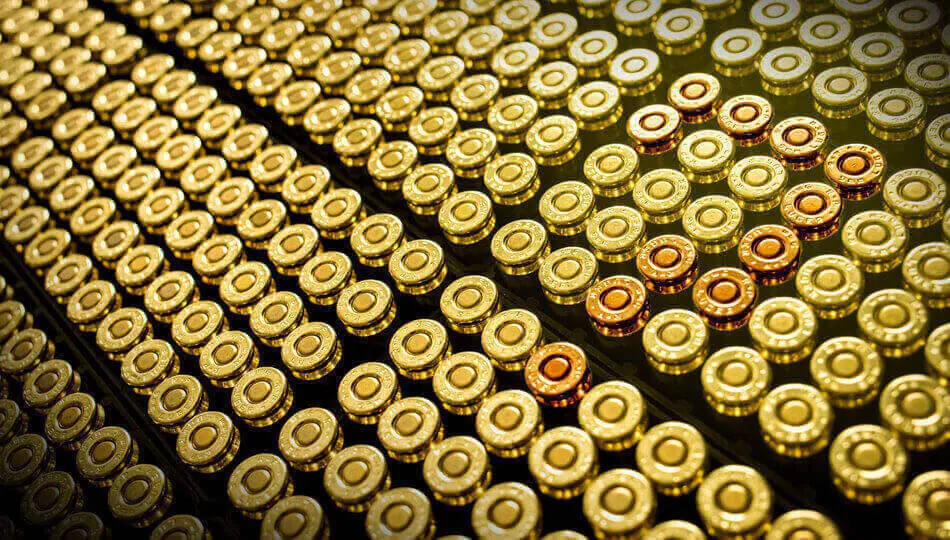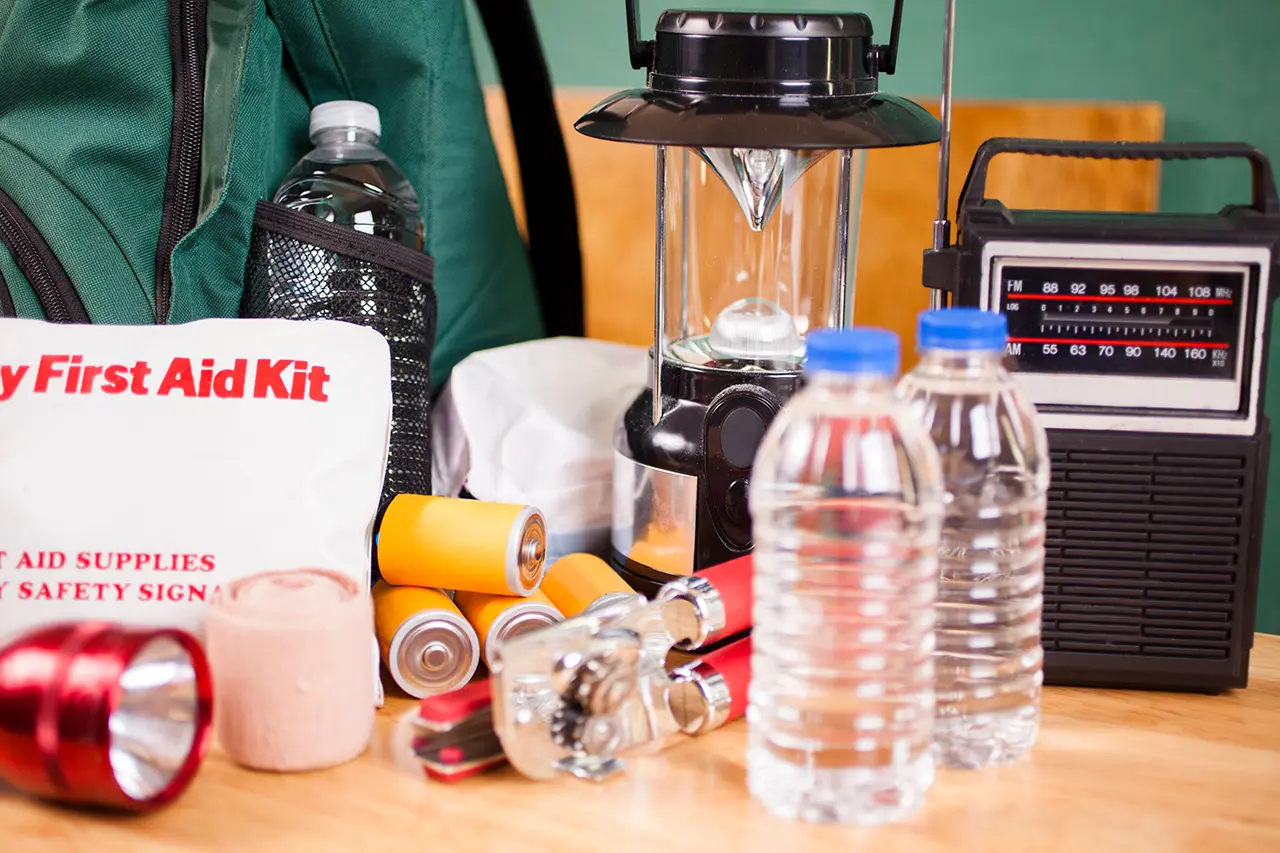
Trying to figure out how much ammunition you should have on hand can sometimes feel like a return to college algebra. Depending on where you look, there are ammo calculations based on rate of fire in a The End Of The World As We Know It (TEOTWAWKI) survival situation, training time, and priorities of multiple platforms (think AR-15, shotgun, handgun, and so on, all of which typically require different ammo). It’s amazing these calculations don’t consider the moon cycle and rising tides as well. If you find yourself wondering “how much ammo should I have?” you’ve come to the right place. We’re going to simplify this process by taking a realistic approach to the topic of your ammo stash and storage.
How Do I Know How Many Rounds of Ammunition Do I Need?
There are a few ways to decide how many rounds of ammunition you need to have on hand at any given time. The first thing to do is to consider these factors:
- Range time on your own (it’s all practice, regardless of what you do)
- Training time in classes, especially those needing large amounts of ammo
- Hunting, which includes zeroing optics, practice, and the hunt itself
- Availability and access (where are the gun stores, and do they have a large ammo supply)
- Storage space
- Self-defense use (Do you carry daily? Defensive ammo needs to be rotated.)
- Overall household needs (ammo needs per shooter)
These are the issues that must be taken into account when doing general calculations on how much ammo you should have on hand. Firearm owners who take high-round count classes will certainly need a greater amount on hand, and if there’s no good place to store the ammo, you’ll need to find a workable solution before investing in more supplies.
In reality, there’s no magical number or specific calculation that will tell you how much ammo to store for later use. It depends on your own usage and needs as well as the needs of other marksmen/markswomen in your household. However, there are some general guidelines you can follow, but you must also remember to expect the unexpected, such as a serious ammo shortage.
Since 2020, ammo availability has been an issue. A number of problems caused this including pandemic-related restrictions on how many workers could be in a factory at any given time and related trouble getting supplies. Primers became almost immediately impossible to get, and that applied to the big ammo manufacturers, too. It hasn’t mattered whether it’s an ammo manufacturer or someone looking to reload at home, availability is a problem. Components such as primers remain difficult to find, and there are still supply chain issues with factory loaded ammunition.
Does Caliber Matter?
Caliber matters when it comes to focusing on how much ammo you’ll use for practice or defensive purposes. It might be tempting to buy an on-sale box of 40 Smith & Wesson in case you ever need it down the road, but if you don’t own a gun chambered for that cartridge, it shouldn’t be your main focus.
If you only own firearms chambered in 9x19mm Parabellum, then 9mm is the obvious cartridge for you to stock up on. However, if you own multiple firearms in various calibers, it can be a bit more challenging. When deciding what to buy, consider the use of the gun in question and what your own needs are as a firearm owner. Are you focused on self-defense, or only concerned with hunting? Buy the ammunition you need for your most-used firearm, first. Any gun not being carried or shot on a regular basis can wait until you’re properly prepared with the firearms you need to keep fed.
Prioritize by need before worrying about wanting to have more boutique or underused rounds on hand. You shouldn’t only have target rounds available for practice, but defensive or hunting loads.
Enjoying this content? Find out how you can get more sent straight to your inbox.
Should All My Firearms Be the Same Caliber?
It’s an often-repeated belief that as a gun owner, you’re better off if your firearms match, right down to the model for ease of magazine sharing. The idea is that if you’re using a commonly owned firearm chambered in a popular cartridge, you’re more likely to be able to grab what you need in a TEOTWAWKI situation. Also, many gun owners with other halves who also carry—or hunt—prefer matching guns and cartridges so they can be easily interchanged.
There’s some logic behind this belief system, and if it fits your purposes, there’s no harm in following it from a defensive perspective. However, stop and think about these benefits of having multiple calibers available:
- Broader shooting skills as a result of using a wider range of calibers
- Easier to adapt if you need to use someone else’s firearm that doesn’t match your own
- Cartridges used less often are frequently more readily available during ammo shortages affecting the more mainstream ammo options, such as 9mm
- The “popular” cartridge might not be your personal preference
- Commonly used cartridges and guns may not fit your needs, skills, or hand size
- Having multiple options, rather than being restricted to one caliber, gives you more choices and flexibility in different scenarios
When choosing a gun and caliber for personal-defense use, select what fits your skill level, hand size, and needs. Firearms are tools and should suit a specific purpose, whether that’s daily carry, hunting, home defense, or fun at the range.
How Much Ammo Does the Average American Have?
The answer to how much ammo the average American has varies wildly. Some firearm owners may not keep any ammo on hand while others take stocking up seriously and could have thousands of rounds per gun. There are a surprising number who have one or two 50-round boxes available. No one-size-fits-all answer exists for this question. It depends on the person.
Ammo Storage Tips
Ammo storage can be simple or complex. If you’re looking at long-term storage, you’ll need to consider methods that reduce exposure to excessive heat, cold, and moisture. The following are some of the possibilities for long-term ammo storage:
- Metal ammo can with desiccant packets
- Plastic ammo can with desiccant packets
- Safe or storage room with dehumidifier
What to look for in an ammo can:
- 0 inch longer and 0.5 inches wider than needed for the specific ammo being stored
- Water-resistant
- Durable enough design to handle the weight of what you intend to store in it
- Handle and latches also capable of withstanding the weight of ammo
- Consistent style, rather than various types, for easier stacking
- Rubber gasket on lid for a better seal
- Portability (ammo is heavy; be sure they won’t be too heavy to transport)
How Many Magazines Do I Need?
Magazines are necessary to run your guns, and they’re the first failure point when something goes wrong. Due to that reality, it’s wise to have more than a couple magazines for the firearms you use all the time. Ideally, have at least six magazines per gun, and grow from there. Try to avoid buying new magazines and throwing them in a box without trying them out. It’s best to catch magazine failures before the moment your life depends on them working.
Bottom Line: How Much Ammo Do I Need?
A good starting point is to have 500 rounds, 200 of which should be defensive ammo, for each regular-use handgun. This isn’t the end goal, it’s where you start, meaning you should plan to build your ammunition reserves into the thousands.
AR-15s being used for defensive purposes require a larger store than handguns. Try to keep at least 2,000 rounds on hand for your AR-15, and if that is your TEOTWAWKI gun, make half defensive rounds.
If you use your AR-15 for hunting, you’ll need to increase the stockpile to account for that use. Separate hunting rifles will need a minimum of 500 rounds each. Remember, you need to zero your scope using your chosen hunting load, get some practice in, and hunt more than once.
Shotguns depend on what you’re using them for. Your personal-defense shotgun will need at least 250 shotshells on hand, but if you use it for hunting, it’ll depend on what you’re after. For example, doves and ducks require far more ammo than hog or deer hunting. A hunter can burn through 100 or more shotshells in one day dove hunting. Plan accordingly.
These are all a great place to start your ammo stash, but it isn’t the end by any means. Having enough ammunition readily available for training, practice, hunting, and defensive use is much simpler than being forced to go to the store every time you want to shoot. And when there are significant ammo shortages, you may not find any at all—or if you do, you’ll end up limited to two boxes. That’s an especially bad position to be in from a defensive perspective, but it’s also not good when it’s hunting season and you have no ammo at home and there’s none in the stores. Life as a responsible firearm owner is easier when your gun room shelves are well-stocked.
Your Protection Starts Here!
The information provided in this publication is intended to provide general information to individuals and is not legal advice. The information included in this publication may not be quoted or referred to in any other publication without the prior written consent of U.S. LawShield, to be given or withheld at our discretion. The information is not a substitute for, and does not replace the advice or representation of a licensed attorney. We strive to ensure the information included in this publication is accurate and current, however, no claim is made to the accuracy of the information and we are not responsible for any consequences that may result from the use of information in this publication. The use of this publication does not create an attorney-client relationship between U.S. LawShield, any independent program attorney, and any individual.





Here’s my take. You should have 1,000 rounds for each caliber on hand. After that, you can have as many as you want. The only consideration is if your home catches fire. In which case, you don’t want rounds burning off when there are firemen in the house trying to save your home. So get an appropriate cabinet or safe to store the ammo.
My philosophy is that it is a personal choice of what guns one owns, the calibers, and the amount and type of ammo and magazines for each. I personally do not divulge this information publicly and follow the FAAFO doctrine if one really wants to know. What guides how much ammo I have in each caliber is based on purpose of the firearm, and if it is my primary or secondary weapon. The basic combat load for an infantry rifleman is 210 rounds loaded in 7 magazines (one loaded in rifle, 6 carried in mag pouches). I keep all primary rounds loaded up in forty 30 round mags and the balance on 10 round stripper clips. I consider the basic combat loadout as a minimum standard and carry additional mags and strippers clips in an assault pack. As a veteran, when I was active duty, we looked for ways of reducing ruck and assault pack weight and replaced the weight we reduced with, you guessed it, ammo. This loadout works for military patrols, but is also applicable to urban SHTF scenarios that require a “grey man” approach to not stand out like a target. You can carry the same loadout without looking like an operator.
Regarding ammo storage tips, for me, I am ready as the situation changes. If there is a threat of confiscation and seizure, I move ammo stores to caches and keep 2 basic loadouts within easy access. Check out the Youtube channel for Tactical Rifleman and review his caching guidance video. It is the way and is time tested. You do not want the environment destroying you cache and documenting each. Karl covers this in depth with a subject matter expert. Ammo, guns, food, medical/pharma, PPE, and critical items should be considered. I keep cache locations and documentation encrypted on two flash drives, one primary, one backup in an EMP shielded case for the backup.
The most likely scenario that I would be deploying an armed defense is when moving to a bugout location in a low key, grey man manner that avoids any threat situation along the way, which for me, is rational as I will have my family with me. We will all be truly blessed if we never have to execute these defense plans and that is my hope. Equipped, trained, and ready to shoot, move, and communicate.
It made sense to me when you said that it is wise to have more than a couple of magazines for guns since they are necessary. This is something that I will share with my father who needs the service of a gun reloading supplier. He is planning to purchase magazines and ammo for two of his guns.
Lol , when I was hunting a box of amo lasted several years. This sounds like war not home defense. If it is war well good luck.